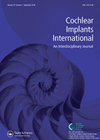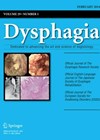
Journal Reviews
The risks of misjudging African American dialects as lesser!
Healthcare inequalities in multicultural societies, such as the UK, are becoming increasingly apparent. They arise via a complex interplay of factors, with socioeconomic deprivation, structural biases and specific cultural and biological risk factors all contributing to disparities. There is ample...
Is there any point giving postoperative oral steroids after a FESS?
It is well accepted that when medical treatment fails for chronic rhinosinusitis (CRS), endoscopic sinus surgery (ESS) is more effective than continuing with medical therapy alone. A variety of postoperative care options are available, including saline irrigation, in office debridement,...
An otological cure for globus?
Globus pharyngeus is a common benign condition frequently encountered in ENT practice. Laryngopharyngeal reflux and psychological stressors are often considered to be contributory factors, but globus symptoms do not always respond to antacid medications. Such medications can also be limited...
Benefits of bilateral cochlear implants
In an ideal world, if you could increase the clinical use of bilateral cochlear implant (CI) treatment, would you? If you’re interested in exploring the clinical benefits of bilateral CIs, or how reviews can directly inform patient care, this systematic...
Swallow toxicity score (DIGEST) and its clinical utility in oncology practice
The Dynamic Imaging Grade of Swallowing Toxicity (DIGEST, graded from 0–4) was developed as a tool for clinicians to grade dysphagia from modified barium swallow studies (MBSS). The purpose is to provide a common terminology for adverse events of pharyngeal...
Elevated intracranial pressure versus migraines versus sinusitis?
This narrative review discusses the challenges faced by an otolaryngologist to differentiate elevated intracranial pressure (eICP), migraines and chronic rhinosinusitis (CRS). Facial pain, pressure, aural fullness, muffled hearing and tinnitus are often common symptoms described by patients with all three...
Management of traumatic facial palsy
Most traumatic facial palsies resolve with conservative management. Early facial nerve decompression is indicated in acute complete traumatic facial palsies. House–Brackmann (HB) classification is used universally to classify the severity of the facial nerve injury, but few centres have availability...
Auricular acupuncture for tinnitus
Acupuncture has long been suggested as a complementary option for tinnitus, but its effectiveness remains uncertain. This systematic review analysed 57 studies published between 1975 and 2023, drawn from an initial 167 identified. The studies were highly variable, ranging from...
Keep on moving
This study compared the differences in localisation of sound between those with symmetrical hearing within normal limits (NH) and those with single-sided deafness (SSD). Unsurprisingly, those with SSD took longer to localise sounds and had a higher error rate. Although...
Drooling: what is it like to be unable to manage your own saliva?
Drooling in Parkinson’s is associated with less frequent and inefficient swallowing, resulting in a build-up of saliva in the mouth that then moves beyond the lips. It often causes discomfort as the skin becomes sore, and results in embarrassment. The...
A comparison between artificial and cadaveric temporal bones in terms of providing realistic setting and structural details
Increasing difficulties, costs and risks of infection have led to the use of artificial temporal bones for training in mastoid and middle ear surgery. Whether these provide a realistic learning environment (face value) and offer structural details to learn from...
A study defining septal areas and turbinates that are relevant in assessing patients with nasal obstruction
The symptom of nasal obstruction is subjective when patients present in clinics. The decision to intervene surgically is often made on clinical appearance of the nasal septum and turbinates which, unless extreme, cannot always be judged as different from patients...















